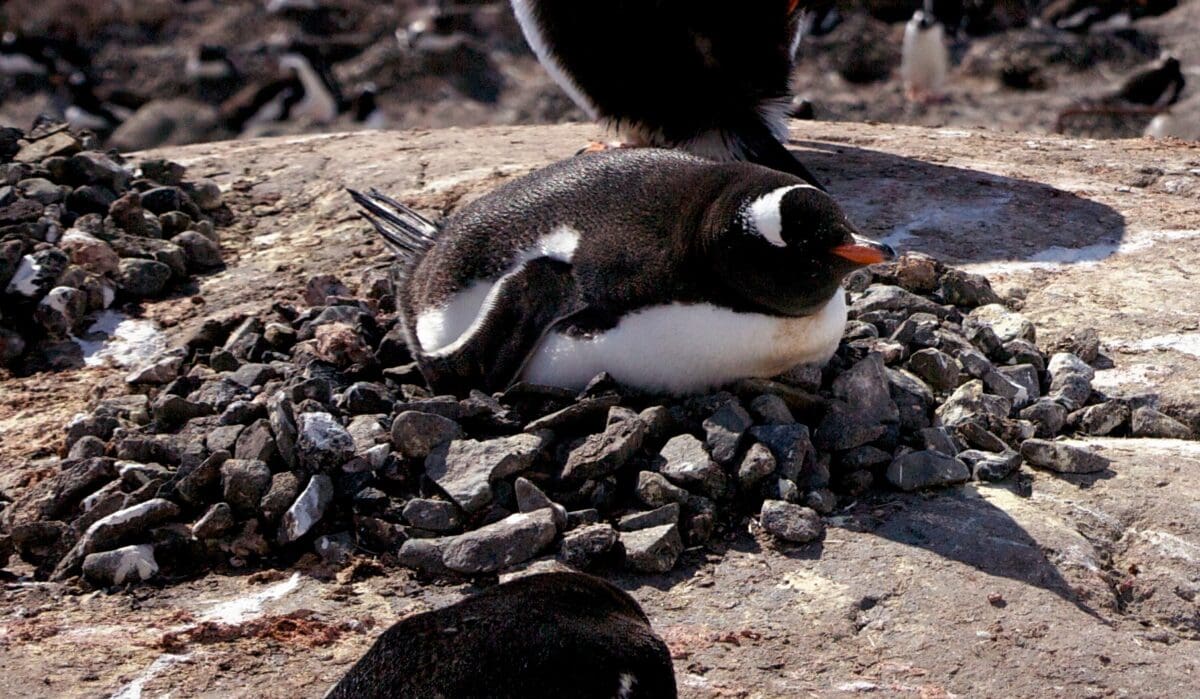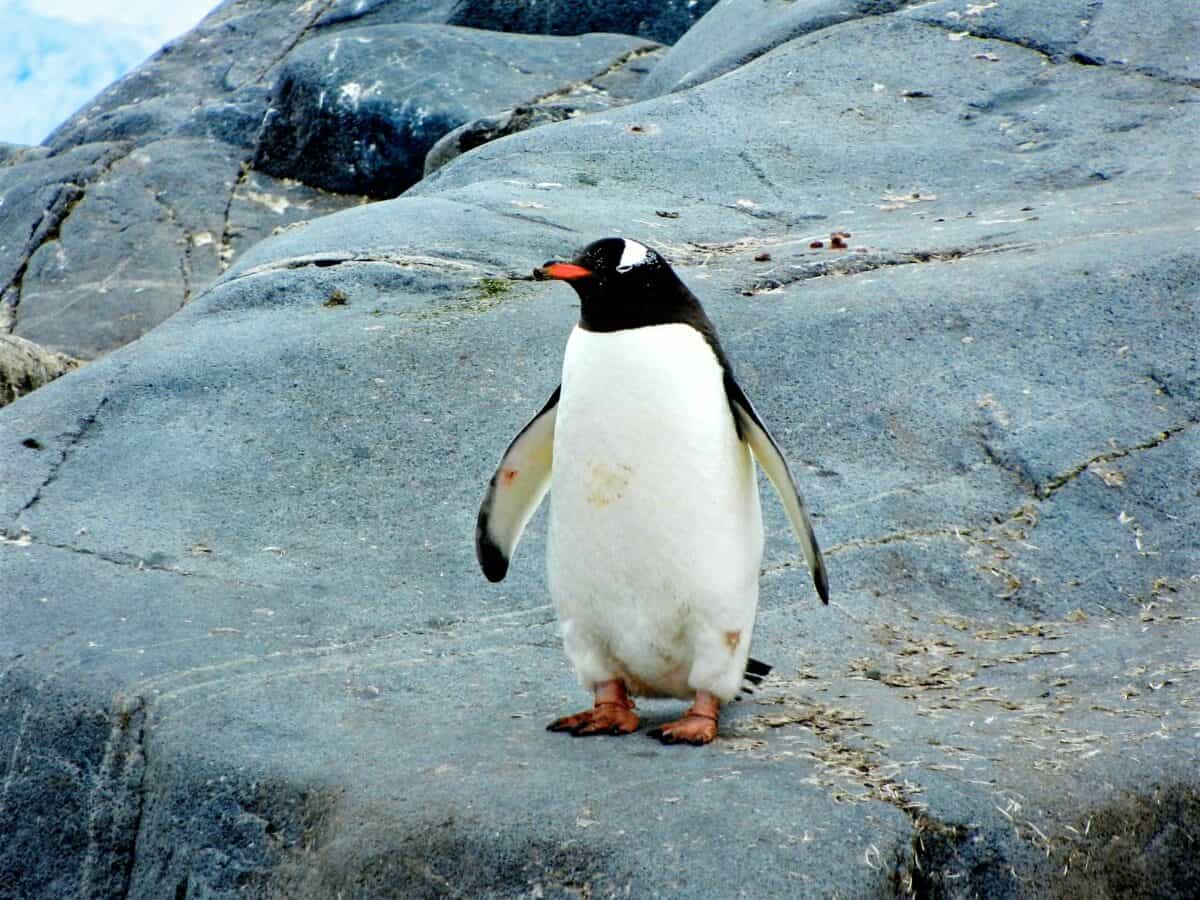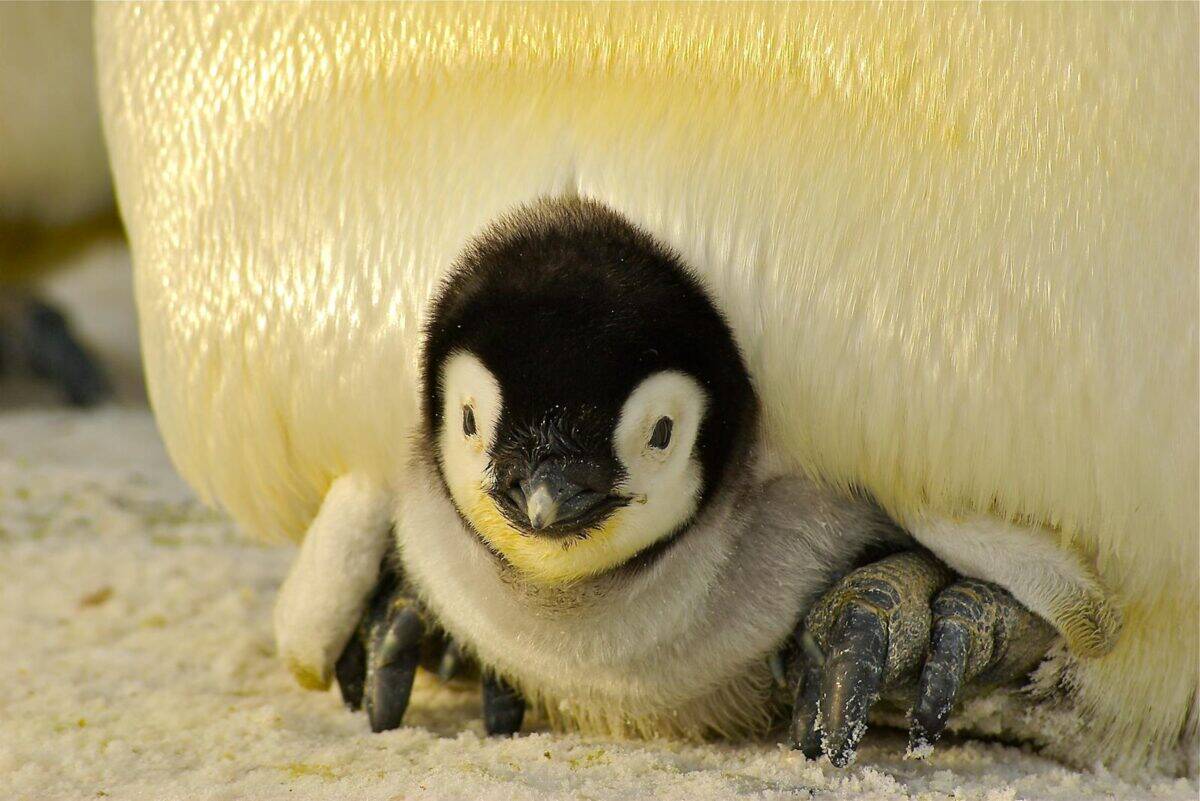In the harsh, windswept landscapes of Antarctica and other southern regions, penguins have developed one of nature’s most remarkable parenting partnerships. These flightless birds face brutal environmental challenges when raising their young, including freezing temperatures, limited food access, and predator threats. To overcome these obstacles, penguin parents have evolved an extraordinary system of cooperative care, taking precisely coordinated turns between foraging at sea and tending to their nest. This remarkable rotation of parental duties ensures their chicks receive constant protection and nourishment, representing one of the animal kingdom’s most impressive examples of cooperative parenting. From the initial courtship to the fledging of their young, the journey of penguin parenthood demonstrates nature’s ingenious adaptations to extreme conditions.
The Penguin Family Structure

Most penguin species are monogamous, forming pair bonds that can last for multiple breeding seasons or even life. Emperor penguins, Adélie penguins, gentoo penguins, and king penguins are among the most well-known species that demonstrate strong co-parenting behaviors. Each species has developed variations of the tag-team parenting approach to suit their specific environments and biological needs. For instance, emperor penguins breed during the Antarctic winter, facing temperatures as low as -40°F, while Adélie penguins breed during the brief Antarctic summer.
The strength of penguin partnerships is crucial to their reproductive success. Studies have shown that experienced pairs who have successfully raised chicks together in previous seasons tend to have higher breeding success rates. These established couples synchronize their behaviors more effectively and make better collective decisions about nest placement and feeding routines. This family structure, based on shared responsibility and precise coordination, enables these birds to reproduce successfully in some of Earth’s most challenging environments.
Courtship and Pair Bonding

Before the elaborate parental duties begin, penguins engage in intricate courtship rituals that cement their pair bonds. Male penguins typically initiate courtship, using species-specific displays to attract females. Adélie penguins present stones as gifts to potential mates, while emperor penguins perform elaborate posturing and vocalizations. Gentoo penguins engage in “ecstatic displays” where they stretch their necks, spread their flippers, and call loudly to the sky. These courtship behaviors serve both to attract a mate and to strengthen the bond between partners who will need to coordinate closely during the challenging breeding season.
Once pairs have bonded, they synchronize their reproductive cycles through hormonal changes triggered by seasonal cues like changing daylight hours. This synchronization ensures that both parents are physiologically prepared for their upcoming roles. In most species, established pairs from previous years will reunite at the same breeding colony, sometimes even returning to the exact same nesting site. This familiarity with both their partner and territory gives experienced pairs an advantage in the demanding task of raising chicks in extreme environments.
Nest Preparation and Territory Defense

Nest preparation is a crucial stage in the penguin breeding cycle, with both parents typically contributing to building or preparing the nest site. The specific approach varies by species – emperor penguins don’t build physical nests but rather balance their eggs on their feet, while species like Adélies and gentoos construct nests from stones, pebbles, and sometimes vegetation. These stone nests serve multiple purposes: they elevate eggs above wet ground during snowmelt, help define territory boundaries, and can even become part of ongoing courtship as males continue to bring “gift” stones to their mates throughout the breeding season.
Territory defense is shared between partners, with both taking turns warding off intruders and nest-material thieves. Studies have documented how penguin colonies become highly competitive spaces, with neighboring pairs often attempting to steal prime nesting materials from each other. Both males and females actively defend their territory through posturing, vocalizations, and sometimes physical confrontations with intruders. This joint defense of the nesting site is the first example of the turn-taking behavior that will characterize their entire breeding season.
Egg Laying and Initial Incubation

The female penguin typically lays one or two eggs (depending on the species), representing a significant physiological investment. For example, an emperor penguin egg equals about 2.3% of the female’s body weight. After egg-laying, the first critical exchange occurs when most penguin species have the female transfer incubation duties to the male. This transfer must be executed with extreme precision, particularly for emperor penguins, where the egg is carefully rolled from the female’s brood pouch onto the male’s feet and then covered with a feathered skin fold called the brood pouch. The entire transfer takes just seconds but requires perfect coordination to prevent the egg from being exposed to the freezing Antarctic temperatures, which would be fatal.
After this transfer, female emperor penguins immediately depart for the sea to feed, having lost up to one-third of their body weight in the egg production process. They will travel up to 50 miles across the ice and then swim hundreds of miles to reach open water where they can feed. Meanwhile, males begin what may be the animal kingdom’s most extreme parenting shift – emperor penguin fathers will stand in place, balancing their eggs and then chicks on their feet, for up to 115 consecutive days without feeding. During this time, they endure the worst of the Antarctic winter, losing up to 45% of their body weight while huddling together for warmth.
The Remarkable Emperor Penguin Strategy

The emperor penguin’s breeding strategy represents perhaps the most extreme example of parental turn-taking in the animal kingdom. After the female transfers the egg to the male, she embarks on a journey to find food while the male begins his extraordinary incubation vigil. Male emperor penguins form tight huddles of thousands of birds to conserve heat during the Antarctic winter, with individuals rotating from the freezing outer positions to the warmer center. This collective behavior allows them to maintain an internal huddle temperature of around 95°F even when external temperatures drop below -40°F and winds exceed 100 mph.
The timing of the female’s return is critical and remarkably precise. After approximately two months at sea, females return just as the eggs are hatching or shortly after. They must locate their partners among thousands of nearly identical birds in the colony, which they accomplish through unique vocalizations that allow individual recognition. This precise timing means the exhausted males, who have been fasting for months, can finally transfer care of the newly hatched chick to the well-fed female and make their own journey to the sea to replenish their depleted energy reserves. This exquisitely timed rotation of duties continues until the chick is old enough to join a crèche (group of chicks) and both parents can forage simultaneously.
The Adélie Penguin Approach

Adélie penguins demonstrate a different but equally coordinated approach to parental turn-taking. Breeding during the Antarctic summer when conditions are less severe, both Adélie parents participate in incubation duties from the beginning. They establish shifts that typically last one to three days, with one parent guarding the eggs or chicks while the other forages at sea. These penguins maintain their rotational schedule through remarkable internal timing mechanisms that researchers are still working to understand fully. Studies using tracking devices have shown that Adélie penguins adjust their foraging trips based on distance to food resources, ice conditions, and their partner’s needs.
Communication between partners during shift changes is minimal but effective. The returning parent signals their arrival with specific vocalizations, and the exchange happens quickly to minimize the time eggs or chicks are exposed. As chicks grow, both parents may spend increasingly longer periods at sea to meet the growing food demands of their offspring. Toward the end of the breeding season, both parents may leave older chicks unattended while they forage simultaneously, returning regularly to feed them. This gradual transition helps prepare chicks for independence while maximizing food delivery during the critical growth phase.
Chinstrap and Gentoo Penguin Variations

Chinstrap and gentoo penguins have developed variations on the turn-taking theme that reflect their particular environments. Breeding in slightly less extreme conditions than emperor and Adélie penguins, they establish more flexible rotation schedules. During incubation, partners may exchange duties every 1-5 days, with males and females sharing responsibilities more equally from the outset. These species build substantial stone nests that provide better insulation and protection for their eggs and chicks, reducing the demands on the incubating parent.
Once chicks hatch, chinstrap and gentoo parents gradually shift to shorter rotations, sometimes exchanging duties multiple times per day as chicks grow and require more frequent feeding. Research using time-lapse photography has documented how precisely these exchanges are timed, with parents rarely leaving chicks unattended during vulnerable early stages. As with other penguin species, the synchronization of these parental shifts is critical to breeding success, with more experienced pairs showing better coordination and consequently higher chick survival rates.
Physiological Adaptations for Turn-Taking

Penguins have evolved remarkable physiological adaptations that enable their coordinated parenting approach. During long incubation shifts, penguins can lower their metabolic rate by up to 25%, conserving precious energy reserves. Emperor penguin males develop a special fat layer before the breeding season that they’ll gradually metabolize during their long fast. They’ve also evolved the ability to recycle uric acid, reducing water loss and extending their fasting capability. Females, meanwhile, develop enlarged digestive organs before their foraging trips, allowing them to process and store large amounts of food efficiently.
The foraging parent undergoes equally impressive adaptations. Penguins are capable of diving to remarkable depths—emperor penguins can reach depths of 1,755 feet and hold their breath for up to 20 minutes—allowing them to access food resources unavailable to many competitors. Their bodies store oxygen in specialized myoglobin-rich muscles rather than primarily in their lungs, and they can slow their heart rate during dives to conserve oxygen. These physiological specializations enable efficient foraging, meaning parents can return to their nesting duties with sufficient food for themselves and their growing chicks.
Communication and Recognition

For the turn-taking system to function effectively, penguins must be able to recognize their specific partners among thousands of visually similar birds. Research has revealed that penguins accomplish this through individualized vocalizations that function like acoustic signatures. Each penguin has a unique call pattern that their partner memorizes, allowing them to locate each other in crowded colonies. Studies using spectrographic analysis have confirmed that these calls contain individual-specific frequencies and rhythms that remain consistent over time. When a foraging parent returns, they will call repeatedly while moving through the colony until their partner responds.
The precision of this recognition system is astounding, with penguins able to find their partners in colonies of tens of thousands of birds, often in blizzard conditions with limited visibility. Chicks also learn to recognize their parents’ unique calls within days of hatching, which becomes crucial as they get older and move around the colony more. This sophisticated vocal recognition system ensures that the precisely timed parental rotations continue seamlessly throughout the breeding season, with each parent reliably finding their partner for the critical handoff of parental duties.
Feeding the Growing Chick

As penguin chicks grow, their nutritional needs increase dramatically, requiring parents to adapt their foraging strategies. Returning parents regurgitate partially digested fish, krill, or squid directly into their chicks’ mouths. The amount of food delivered increases as chicks develop, with parents capable of carrying up to 10% of their body weight in food for their offspring. Emperor penguin females can store food in their stomachs for up to 3-4 days after catching it, keeping it in a semi-digested state through specialized enzymes until they return to their chicks.
The coordination between parents becomes increasingly important during this phase. As chicks grow, their food requirements may exceed what a single parent can deliver, necessitating more frequent rotations or eventually simultaneous foraging by both parents. Research using tracking devices has shown that parents can communicate information about food availability through their behavior, with one parent’s successful foraging sometimes influencing the other’s subsequent hunting strategy. This sharing of environmental information helps maximize feeding efficiency during the critical growth period when chicks must accumulate sufficient fat reserves to survive their transition to independence.
Challenges to the Turn-Taking System

Despite its impressive efficiency, the penguin turn-taking system faces numerous challenges that can disrupt the delicate balance of parental care. Environmental factors like unusually severe storms, excessive precipitation, or early ice breakup can delay a parent’s return from foraging, placing extreme stress on the waiting partner. Climate change represents a growing threat to this finely tuned system, with shifting sea ice conditions altering food availability and travel distances. For example, researchers have documented emperor penguins traveling up to 60% farther to find food in years with unusual sea ice patterns, extending absence periods beyond their partners’ endurance.
Predation represents another significant challenge, with skuas, giant petrels, and leopard seals threatening adults during transits between colony and feeding grounds. The loss of one parent is usually catastrophic for the breeding attempt, as a single penguin cannot maintain the rotation necessary to both incubate/guard and feed the chick. Human disruptions, including tourism and research activities, can also stress colonies and potentially disrupt the precision timing of parental exchanges. Conservation efforts increasingly focus on minimizing these disruptions and protecting both breeding colonies and crucial foraging areas to preserve the remarkable parenting strategies these birds have evolved.
The Remarkable Success of Penguin Parenting

The elaborate turn-taking system developed by penguin parents represents one of nature’s most successful adaptations to extreme environments. Through precise coordination, physiological specialization, and remarkable communication abilities, penguins manage to raise their young in conditions that would be lethal to most other species. Their cooperative parenting approach demonstrates how evolutionary pressures can produce extraordinary behavioral adaptations when survival depends on perfect teamwork. For millions of years, penguin parents have passed the torch of responsibility back and forth, maintaining an unbroken chain of care that bridges the gap between nest and sea.
As climate change increasingly threatens penguin habitats, understanding and protecting these remarkable parenting behaviors becomes ever more important. The precision timing that has evolved over millennia may struggle to adapt to rapidly changing conditions, making conservation efforts crucial. By studying how penguin parents coordinate their efforts so effectively, scientists gain insights not only into avian behavior but also into the fundamental principles of cooperation that underlie successful reproduction in challenging environments. The penguin’s turn-taking parental system stands as a testament to nature’s ingenuity and the power of partnership in the face of adversity.
- How Penguins Take Turns at Sea and Nest to Raise Chicks - August 9, 2025
- Dolphin Brains Compare to Those of Apes and Humans - August 9, 2025
- 14 Cutting-Edge Biotech Innovations That Will Shape the Future - August 9, 2025

